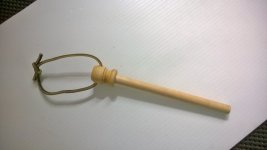J.W.Proctor
Inactive
So I just got a new marlin 1894C. I think the c stands for 357 but I'm not sure. Either way the one I got is chambered in 357. I want to start reloading for it right away . I have the dies and a lynman book on cast bullets.
Three questions though...
First what bullet shape should work best? I imagine round nose but maybe I'm wrong . Lord knows it wouldn't be the first time. I wanna get a mould for both 38 special and 357 which I assume could be the same.
What should I expect with the longer barrel. I imagine higher velocities but are there any words of wisdom when working up loads.
Also which powders would be best? Faster burning ,slower burning ? Medium? I've heard some good things about trailboss but it seems to be just about twice the price of regular powder. And I'm reloading to save money and my rounds are just for plinking and fun.
Three questions though...
First what bullet shape should work best? I imagine round nose but maybe I'm wrong . Lord knows it wouldn't be the first time. I wanna get a mould for both 38 special and 357 which I assume could be the same.
What should I expect with the longer barrel. I imagine higher velocities but are there any words of wisdom when working up loads.
Also which powders would be best? Faster burning ,slower burning ? Medium? I've heard some good things about trailboss but it seems to be just about twice the price of regular powder. And I'm reloading to save money and my rounds are just for plinking and fun.

